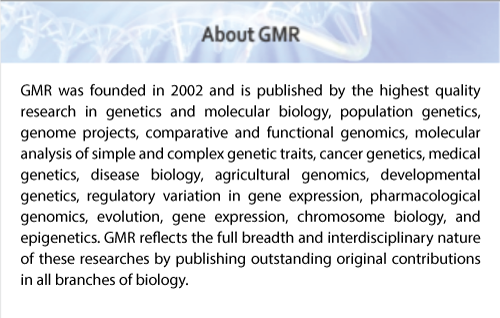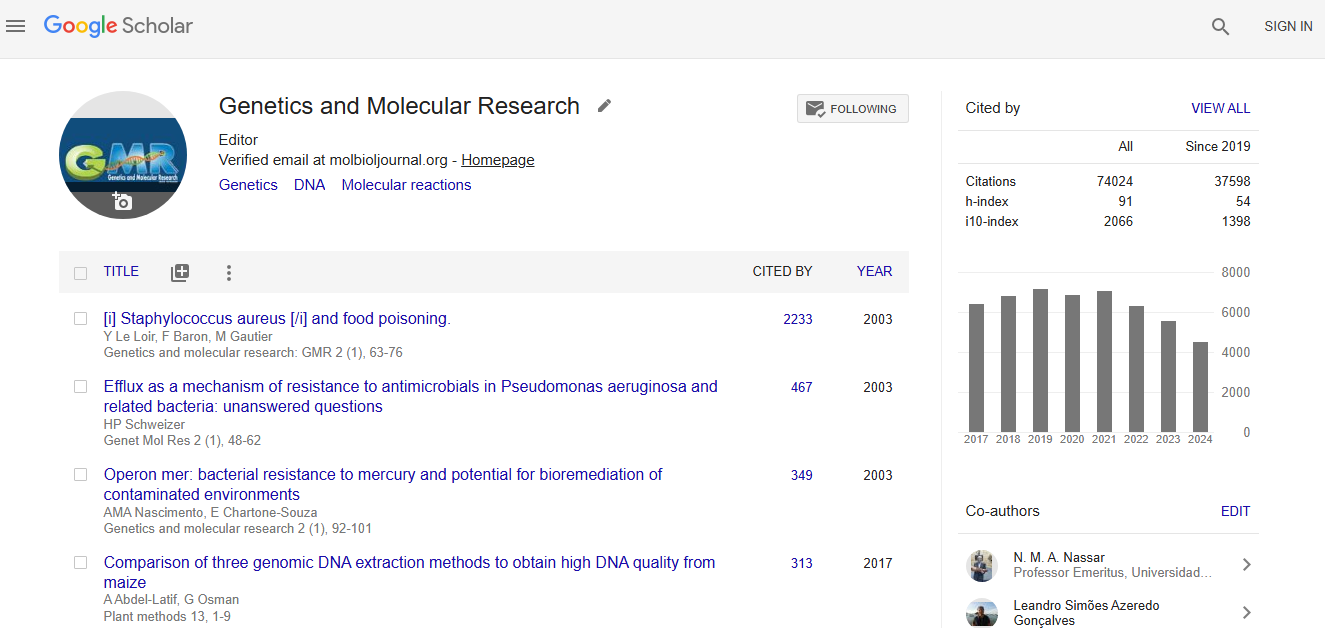Abstract
Genetic diversity and phylogeny of rhizobia isolated from Caragana microphylla growing in desert soil in Ningxia, China
Author(s): J. Dai, X. Liu and Y. WangRhizobia are soil bacteria with the capacity to induce nitrogen-fixing nodules on the roots or stems of legume plants. A total of 40 bacterial isolates from the root nodules of Caragana microphylla growing in desert soil in Ningxia, China, were analyzed for genetic diversity and phylogenetic position. These isolates were classified into 7 types of 16S ribosomal DNA (rDNA) using polymerase chain reaction-restriction fragment length polymorphism analysis. They were grouped into 4 clades, Rhizobium-Agrobacterium, Sinorhizobium, Phyllobacterium, and Bradyrhizobium, when the phylogenies of 16S rDNA, recA, and atpD genes were applied. Phylogenetic analysis showed that the tree generated from the 16S rDNA sequencing agreed with that produced from the recA and atpD genes. By analyzing phylogenetic relationship using the 3 loci, the isolates in the branches of Phyllobacterium and Sinorhizobium could be identified as P. brassicacearum and S. meliloti. The isolates in the branch of Rhizobium-Agrobacterium were the most abundant microsymbiont of C. microphylla and were designated R. leguminosarum, R. galegae, R. alamii, and A. tumefaciens. Two isolates with low sequence similarityto the known species of Bradyrhizobium might be novel species in this genus.
Impact Factor an Index

Google scholar citation report
Citations : 74024
Genetics and Molecular Research received 74024 citations as per google scholar report
